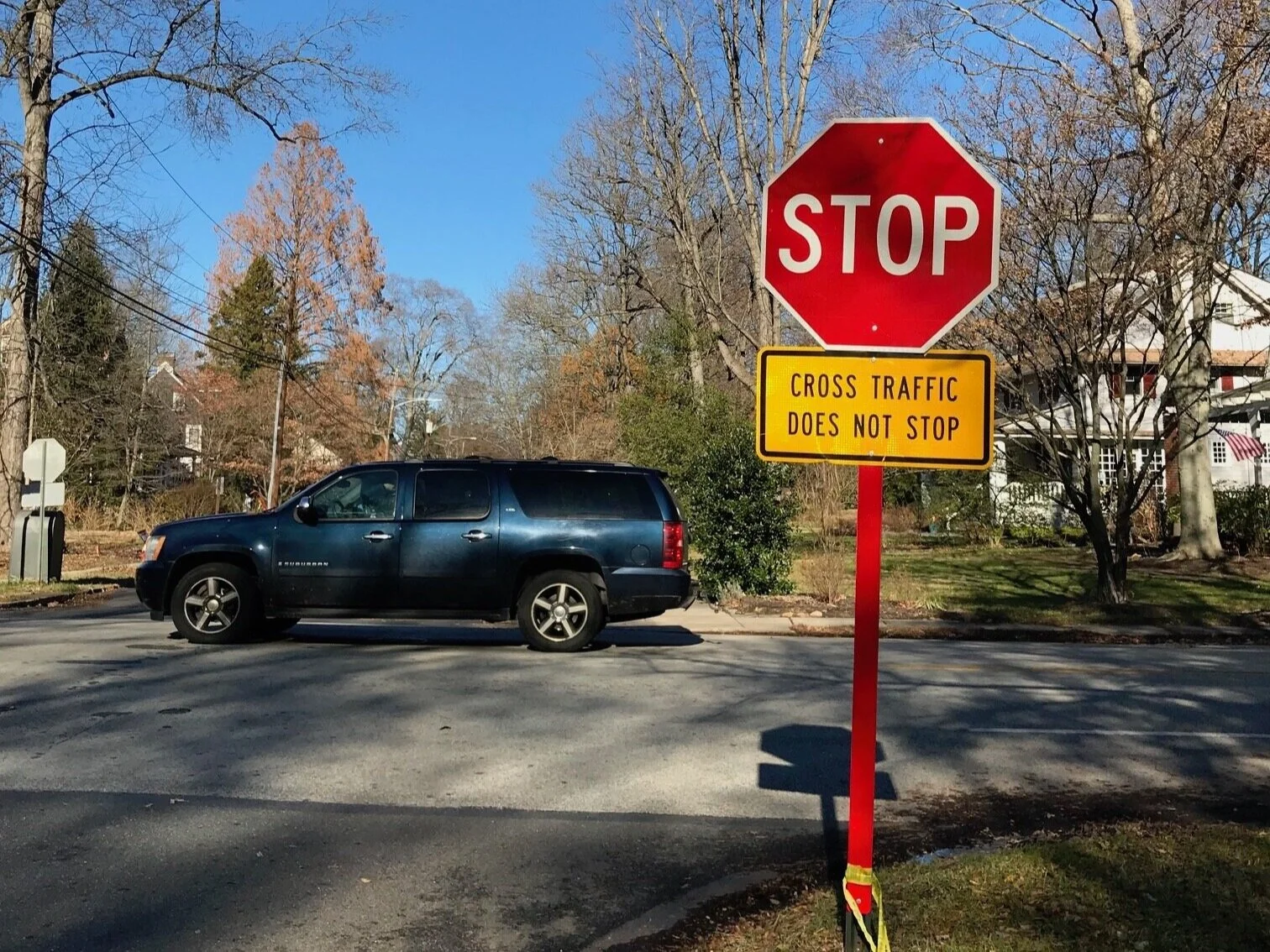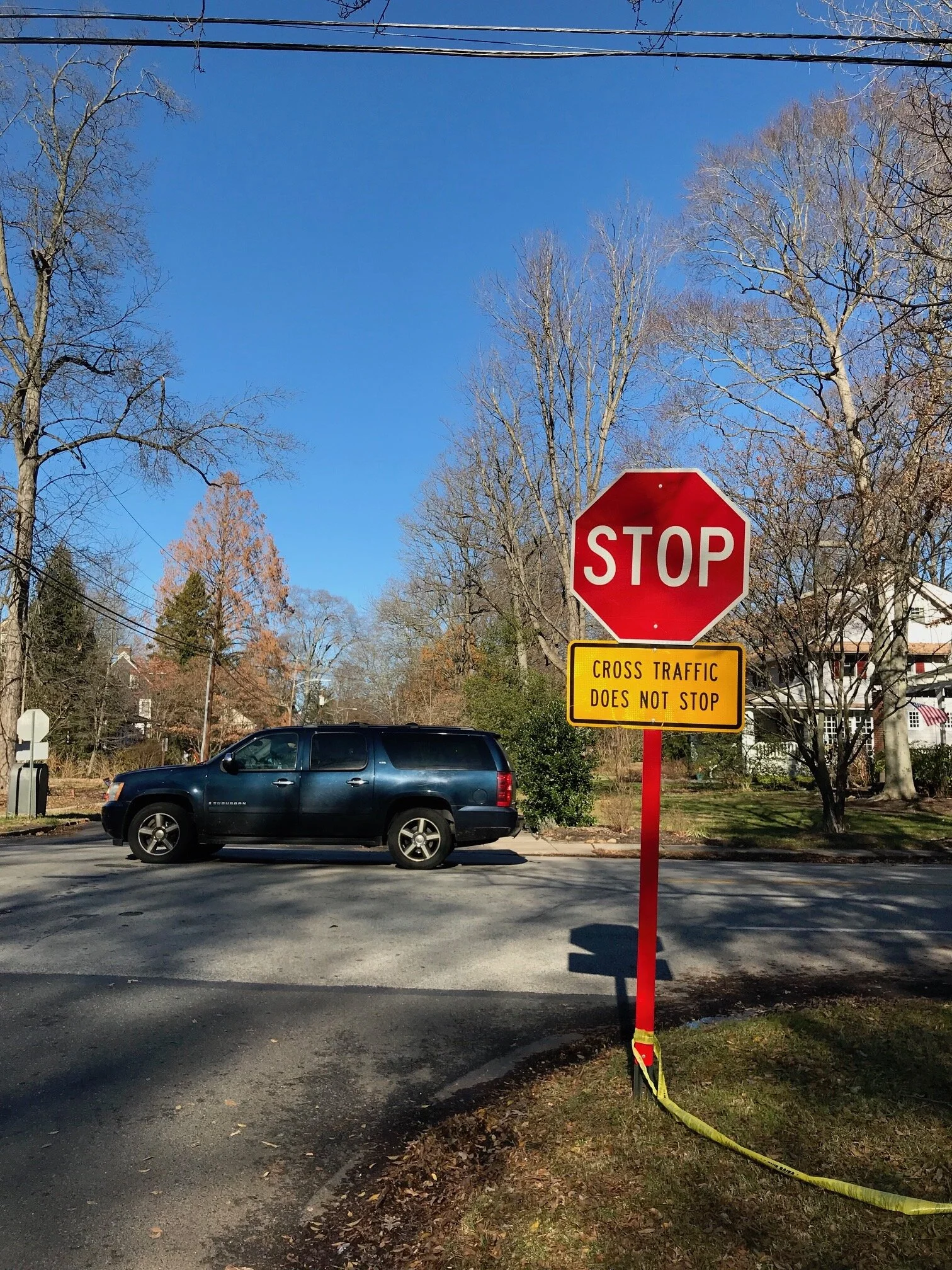A Busy Intersection
The intersection of Yale and Cornell avenues was the focus of much of Borough Council’s Public Safety Committee meeting on November 19. The junction was the site of two accidents in recent weeks, so Chair Mary Walk asked Swarthmore Police Chief Raymond C. Stufflet to provide data on the number of accidents there over the last year.
Between November 4, 2018, and November 4, 2019, there were 123 total accidents in Swarthmore, according to Chief Stufflet’s records. These mostly clustered along the major roads: Chester Road, Swarthmore Avenue, and Yale Avenue. Six of them occurred at Yale and Cornell, which Stufflet said was proportional to traffic volume. Cornell Avenue has become a way of avoiding Chester Road, according to Stufflet, who said that most of the accidents occurred when drivers on Cornell, both north- and south-bound, ran stop signs.
Possible Solutions
Nonetheless, the committee considered what further safety steps might be taken. Swarthmore Fire and Protective Association President Rick Lee pointed out that Cornell Avenue already has a sign that says “Cross Traffic Does Not Stop” — a first for the borough. Member Betsy Larsen noted that the stop signs on Cornell are very visible, and that a hedge along the side of the road is clipped to the appropriate height. The intersection is so close to the light at the corner of Yale Avenue and Chester Road that installing a traffic light is not an option.
Borough manager Jane Billings said that the intersection was reviewed by the borough engineer eight years ago and discussed by the council at that time. As a result of that review, the white line marking the boundary of the driving lane on the south side of Yale was moved, encouraging drivers toward the middle of the road in an effort to provide better visibility. The sign about opposing traffic not stopping was also put in then.
Larsen described the accidents as symptoms of a bigger problem: “It’s people being distracted and aggressive and angry,” she said. “I think these are problems we cannot fix.”
Deterring Speeders
Chief Stufflet also reported on the Electronic Non-Radar Device (ENRADD) recently purchased by the borough for approximately $4,000. ENRADD uses infrared light to determine how fast vehicles are going, so speeders can be ticketed. The department is experimenting to find the best times and places to use it. So far, the intersection of Yale and Rutgers avenues has yielded the most speeders.
The borough also recently purchased an electronic “Your Speed” sign (with solar battery pack) to encourage drivers to slow down. The double-sided sign cost approximately $5,800.
The police are using the new equipment in the areas where they get the most complaints, Stufflet said. But they haven’t caught that many speeders. Chair Walk is hopeful this is a good sign. About speeding in Swarthmore, she said, “Maybe it’s not as bad as people think.”




